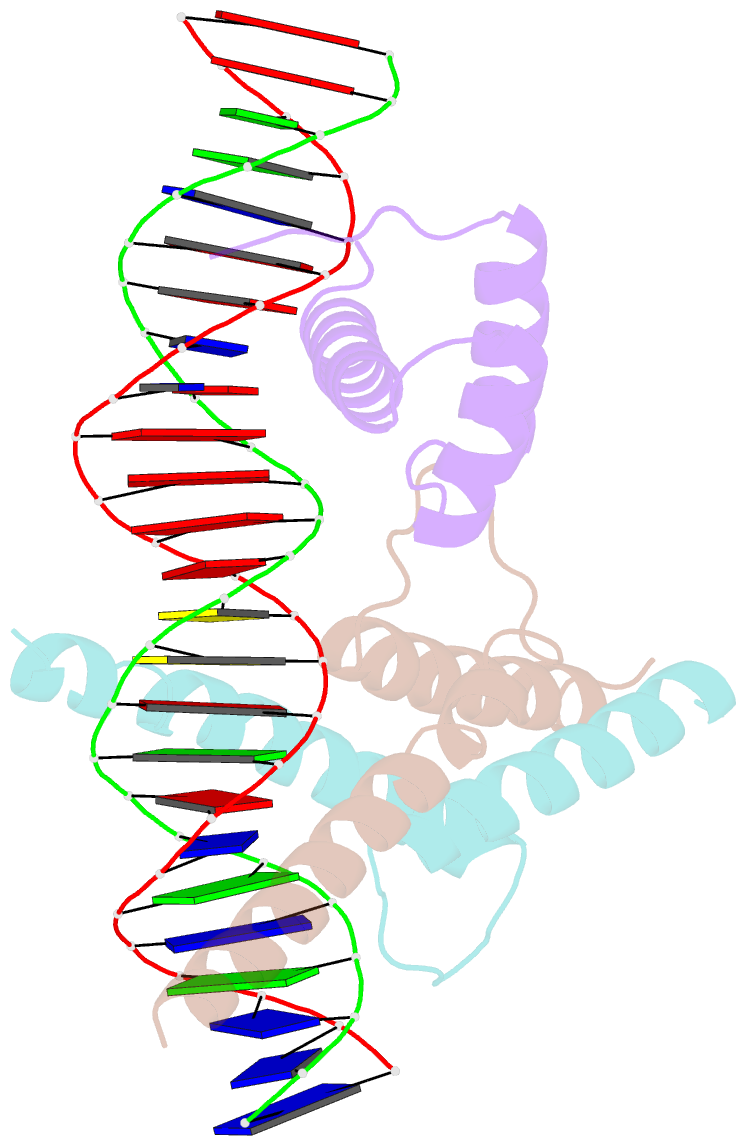Summary information and primary citation
- PDB-id
- 8osb; SNAP-derived features in text and JSON formats;
DNAproDB
- Class
- transcription
- Method
- X-ray (2.9 Å)
- Summary
- Twist1-tcf4-alx4 complex on specific DNA
- Reference
- Kim S, Morgunova E, Naqvi S, Goovaerts S, Bader M, Koska M, Popov A, Luong C, Pogson A, Swigut T, Claes P, Taipale J, Wysocka J (2024): "DNA-guided transcription factor cooperativity shapes face and limb mesenchyme." Cell, 187, 692. doi: 10.1016/j.cell.2023.12.032.
- Abstract
- Transcription factors (TFs) can define distinct cellular identities despite nearly identical DNA-binding specificities. One mechanism for achieving regulatory specificity is DNA-guided TF cooperativity. Although in vitro studies suggest that it may be common, examples of such cooperativity remain scarce in cellular contexts. Here, we demonstrate how "Coordinator," a long DNA motif composed of common motifs bound by many basic helix-loop-helix (bHLH) and homeodomain (HD) TFs, uniquely defines the regulatory regions of embryonic face and limb mesenchyme. Coordinator guides cooperative and selective binding between the bHLH family mesenchymal regulator TWIST1 and a collective of HD factors associated with regional identities in the face and limb. TWIST1 is required for HD binding and open chromatin at Coordinator sites, whereas HD factors stabilize TWIST1 occupancy at Coordinator and titrate it away from HD-independent sites. This cooperativity results in the shared regulation of genes involved in cell-type and positional identities and ultimately shapes facial morphology and evolution.





